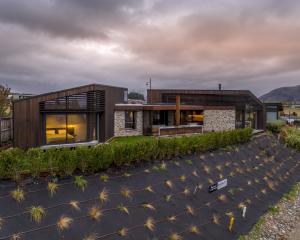Lettuces are thought of as a summer vegetable but seed of some hardy types, such as the old French variety Merveille des Quatre Saisons, can be sown under cloches or under glass to make slow growth until longer days and more sunshine return. The soil must be well-drained and supplied with plenty of organic material, because lettuces are gross feeders. Cloches are commercially available but you can make your own with heavy plastic attached to a wooden frame. Alternatively, find a sunny position and shelter lettuces from cold winds.
Jerusalem artichoke tubers are now ready to harvest. A new crop can be planted at any time from now until early spring. If you want to try them, look in the supermarket or farmers market for large, light-coloured ones without deep eyes in the tubers. Artichokes respond well to liberal manuring and their top growth, which can reach 3m, provides a useful shelter for tender crops from strong, early summer winds. The drawback with this member of the sunflower family is it can spread rapidly and become invasive, but growing this root vegetable in a stack of old tyres can overcome the problem. For the best tubers, grow Jerusalem artichokes in rich, cool soil. One plant should yield about 1.5kg of tubers.
Organic material accessible to urban gardeners is limited. Sawdust is a source of plant food, especially on heavy clay soils, and can be used as a mulch between rhododendrons, azaleas and camellias. Sawdust is not well-balanced, though, and putting it on the flower border can do more harm than good, as it locks up large quantities of nitrogen as it decomposes. Nitrogen-rich fertiliser may be added, but when the nitrogen in the sawdust is finally unlocked, levels in the soil then are likely to be too high, signalled by sappy, weak plants.
The best way to use sawdust for general garden purposes is putting layers in the compost heap, watering it well then sprinkling a layer of poultry manure, sulphate of ammonia or dried blood on top. Mixed with other ingredients in the compost heap, sawdust does make a useful addition to the humus supply of the garden. Autumn leaves, straw, haystack bottom and pine needles are other useful forms of organic material which should be broken down in the compost heap, where fungi, bacteria and enzymes convert the material into rich plant food.
Although once considered only for rockery use, alpine bulbs can be used more widely in the garden. Hoop petticoat daffodils (Narcissus bulbicodium) look best when grouped and will gradually spread out if well-spaced at planting time; Anemone fulgens produces rich, scarlet flowers in late spring; Chionodoxa, or glory of the snow, flowers in late August and September; while Eranthis, or winter aconite, is the earliest of all, with bright yellow flowers set in a circle of shiny green leaves. It belongs to the buttercup family and is grown from a tuber.
Although cream is most common, dog’s tooth violets come in a range of colours and prefer shaded positions with plenty of leaf mould in the soil.
Miniature bulbous irises are attractive spring flowers. Iris reticulata, flowering in late winter, grows about 15cm tall, with flowers in blue shades from the pale Cantab to violet-coloured JS Dijt.
If you have not ordered new fruit trees and prepared the ground for them, do not delay. As well as trees, soft-fruit shrubs, plants and canes are also available now.
Older gooseberry varieties, susceptible to an American mildew inadvertently introduced in 1984, have almost disappeared but two Englishbred gooseberries, Invicta and Pax, are resistant to the disease.
Like gooseberries, red, black and whitecurrants belong to the Ribes genus and although American mildew (Sphaerotheca morsuvae) has been found on these fruits, it is not as devastating as it is on gooseberries.
High-yielding varieties of blackcurrants include Ben Mapua and Ben Rua, while Myra McKee is a recommended redcurrant. Whitecurrants are not widely available, but a bush is worth growing for jelly-making, superior to the redcurrant kind.










